Robin Hood's Bay
OS grid reference:- NZ 950 053
The small picturesque fishing village of Robin Hood's Bay is situated in a fissure between two steep cliffs on the coast of the North York Moors National Park. It lies five miles to the south of the resort town of Whitby.
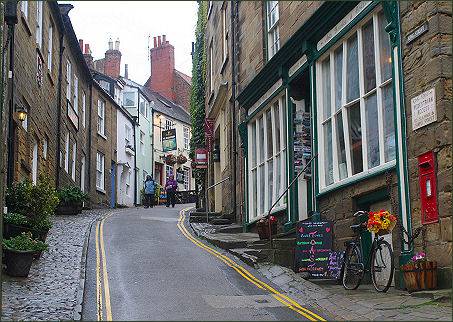
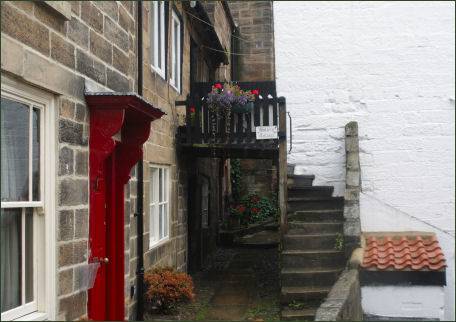
Robin Hood's Bay lies at the eastern end of Alfred Wainwright's famous 190-mile Coast to Coast Walk, and is also a popular stopping-off point for those walking the Cleveland Way National Trail
The origin of the name is uncertain, an English ballad and legend relate the story of Robin Hood encountering French pirates who came to plunder and pillage the fishing boats. The pirates surrendered to Robin Hood, who returned the booty to the poor people in the village that is now called Robin Hood's Bay. In the period 1324-1346 there was an early mention of Robin Hood's Bay. Louis I, Count of Flanders, wrote to King Edward III complaining that Flemish fishermen together with their boats and catches were taken by force to Robin Hood's Bay.
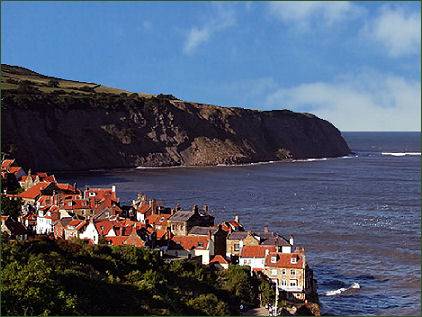
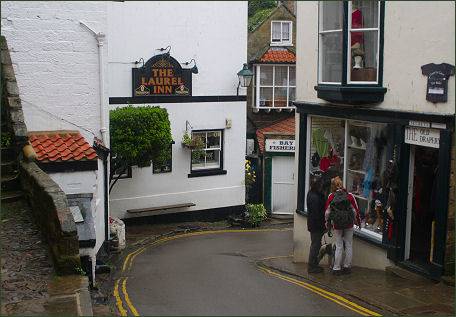
Craggy cliffs tower over the village's warren of characterful narrow streets, while a stream runs through a ravine in the middle of the village to the sea below. St Stephen's Church overlooks the bay and features fascinating souvenirs from the area's many shipwrecks, it replaced a former medieval church which stood on the site until around 1821. The National Trust's visitor centre in the Old Coastguard Station at Robin Hood's Bay offers hands on models and colourful displays. Just inland lies the beautiful Sneaton Forest with its famous Falling Foss Waterfall.
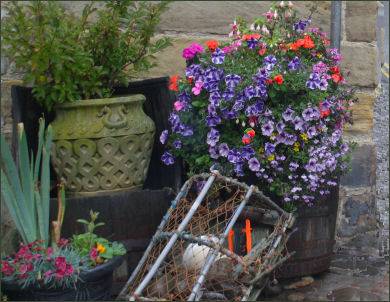
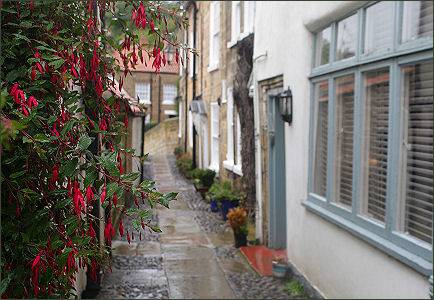
The village has a tradition of smuggling, and there is said to be a network of subterranean passageways linking the houses. During the late eighteenth century smuggling was rife on the Yorkshire coast. Vessels from the continent brought contraband which was distributed by contacts on land and the operations were financed by syndicates who made profits without the risks taken by the seamen and the villagers. Tea, gin, rum, brandy and tobacco were among the contraband smuggled into Yorkshire from the Netherlands and France to avoid the duty.
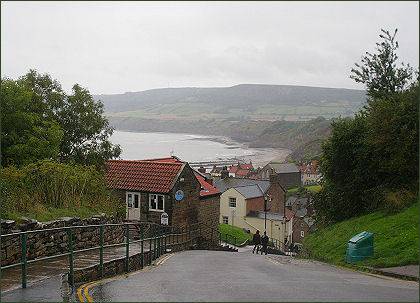
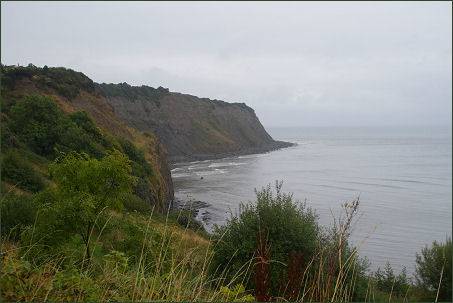
Robin Hood's Bay is the setting for the Bramblewick novels,Three Fevers, Phantom Lobster, Foreigners and Sally Lunn, by Leo Walmsley, who was educated in the schoolroom of the old Wesleyan Chapel in the village. Situated about a mile to the south of Robin Hood’s Bay along the ‘Cleveland Way’ Long Distance Footpath, Boggle Hole, is one of the Yorkshire Coast's little known, hidden gems. It consists of a sheltered bay in front of the old converted Watermill, now a youth hostel and was once a notorious smugglers’ haunt.
Robin Hood's Bay Museum
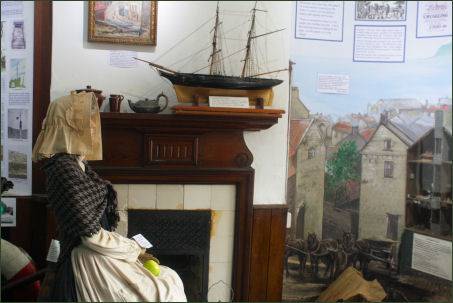 The small Robin Hood's Bay Museum is situated at the heart of the village and houses fascinating collections and displays of local interest.
The small Robin Hood's Bay Museum is situated at the heart of the village and houses fascinating collections and displays of local interest.
The museum contains only three rooms, however, many items of local interest are crammed into this small space! The old village Coroner's Room, converted from an old cottage by the Rev. Cooper in 1891, features interesting displays regarding fishing and shipping in the Bay including details of some of the many shipwrecks and rescues that have occurred there.
Artefacts include items from the last lifeboat to be stationed in Robin Hood's Bay and several models of some of the sailing ships associated with the village.
Upstairs there are displays about the local Friendly Societies, including the museum's prize possession, the original banner of the Robin Hood and Little John Friendly Society. 1,000 years of Fylingdales history is described with the aid of a series of old maps, while details of some old Bay families are also displayed.
In the old mortuary are artefacts depicting life in and around the village over the centuries, 'from the cradle to the grave'.
The museum is slocated on Fisherhead on the south side of the village. Access to the building is via narrow cobbled pathways and steps. Entry to the museum is free.
